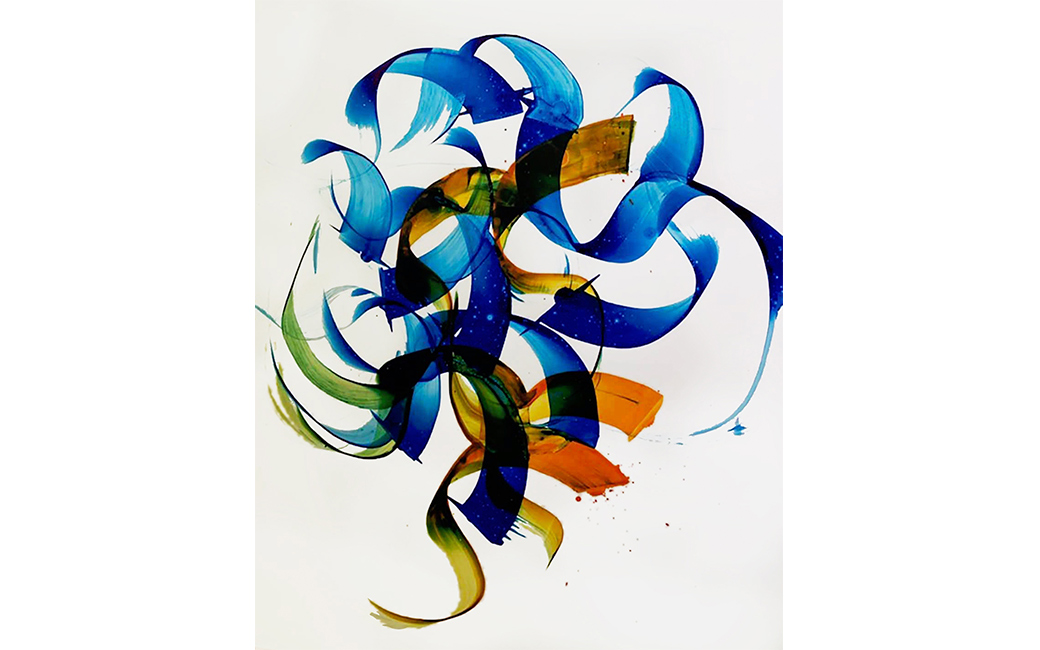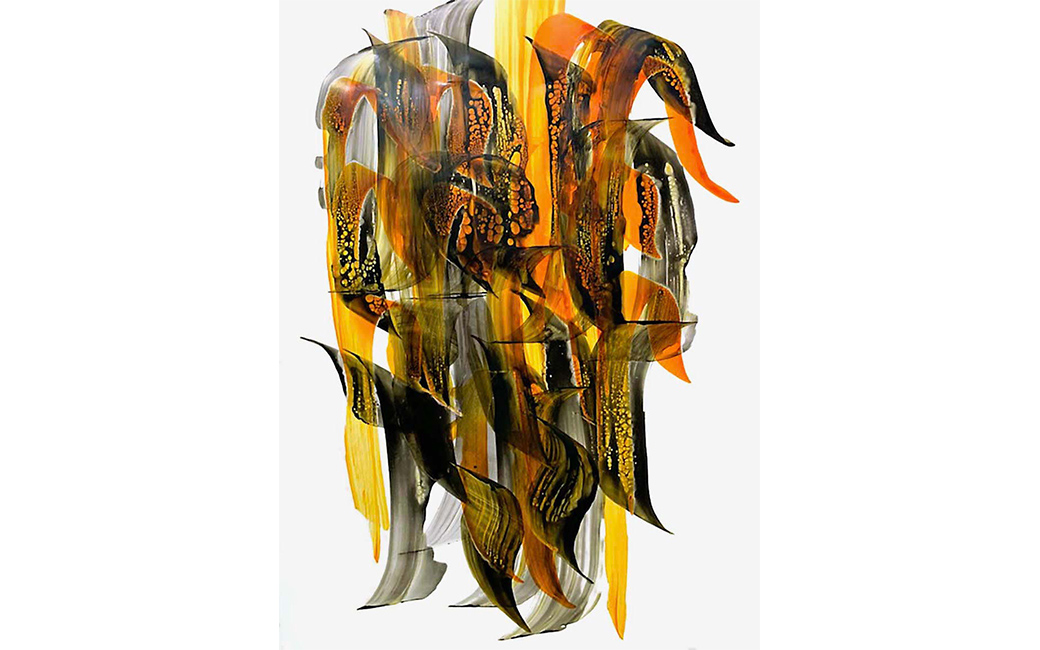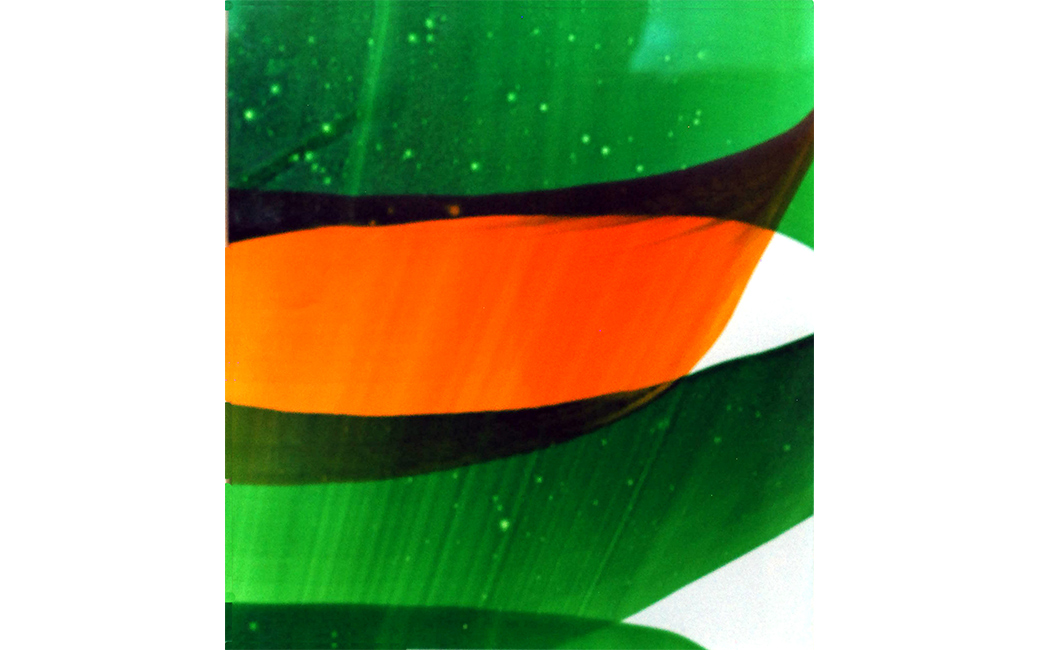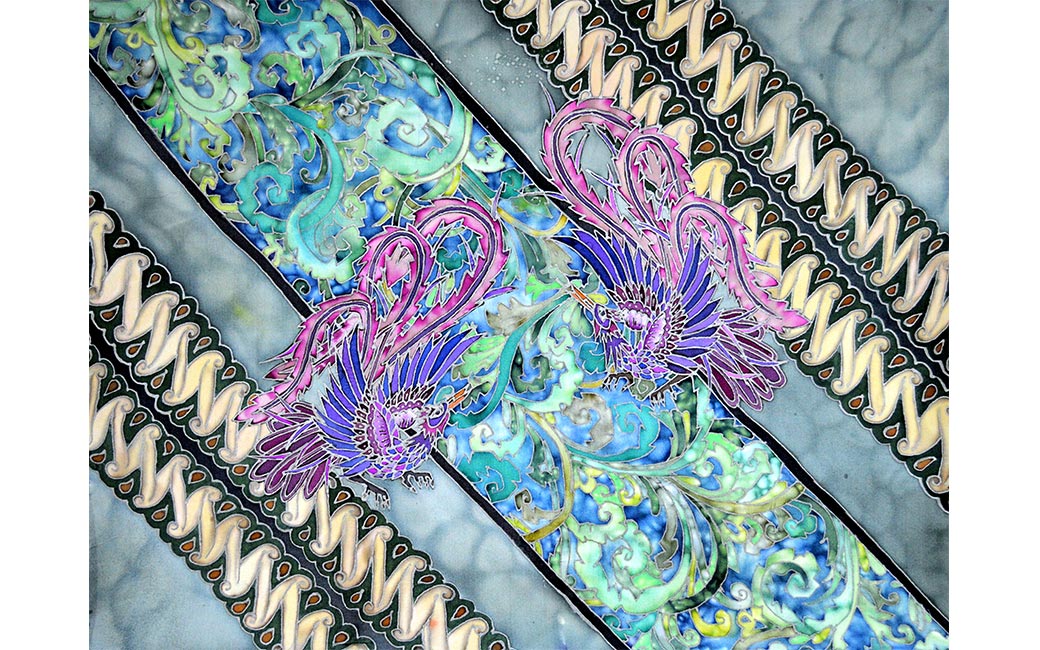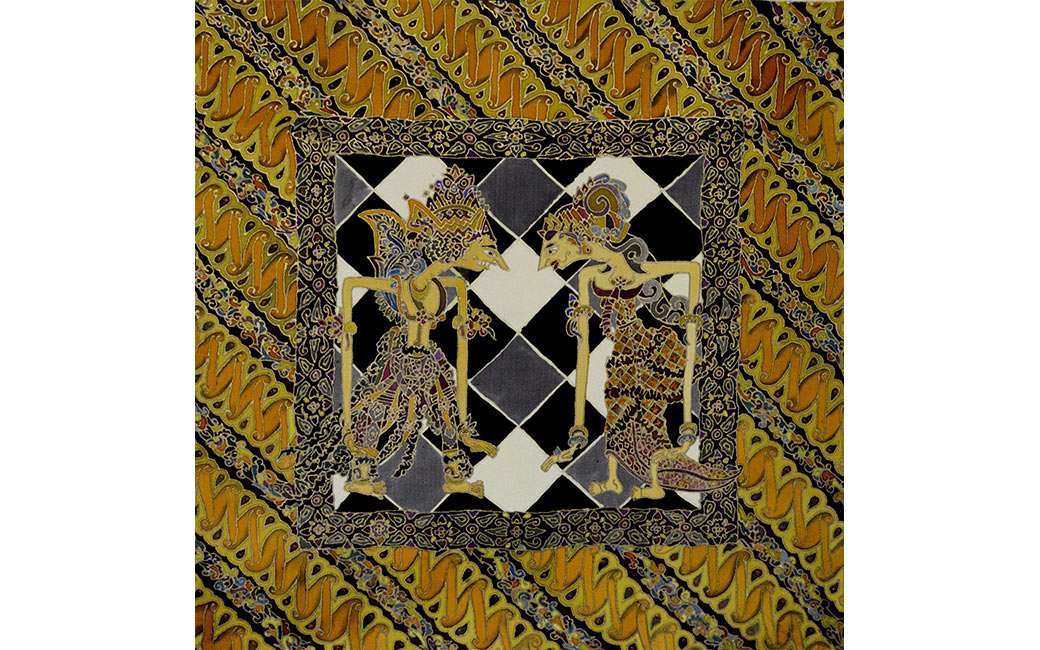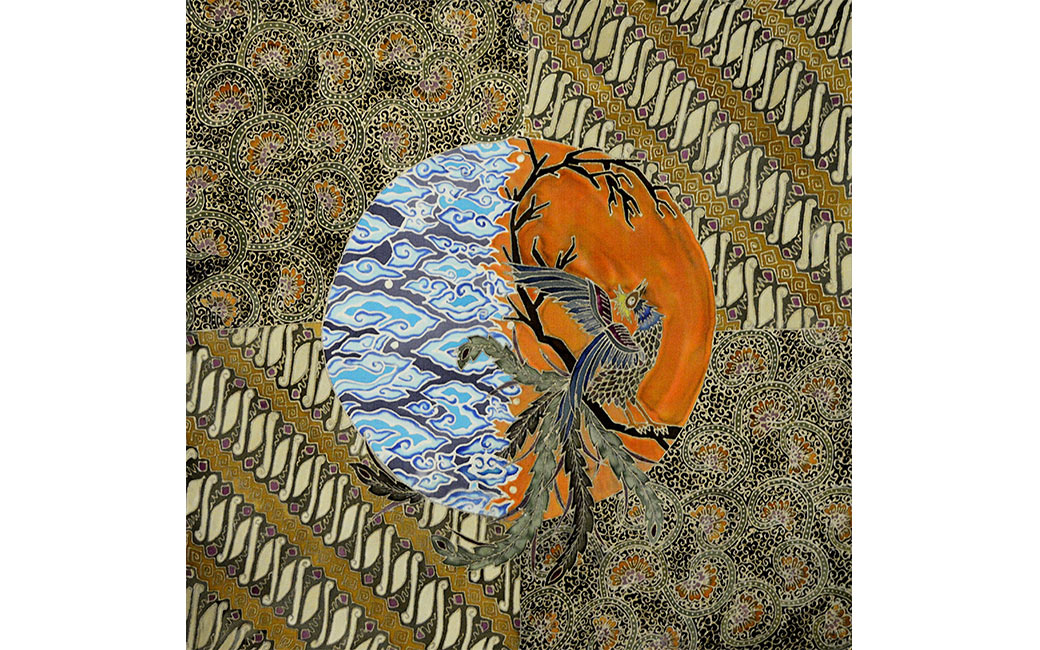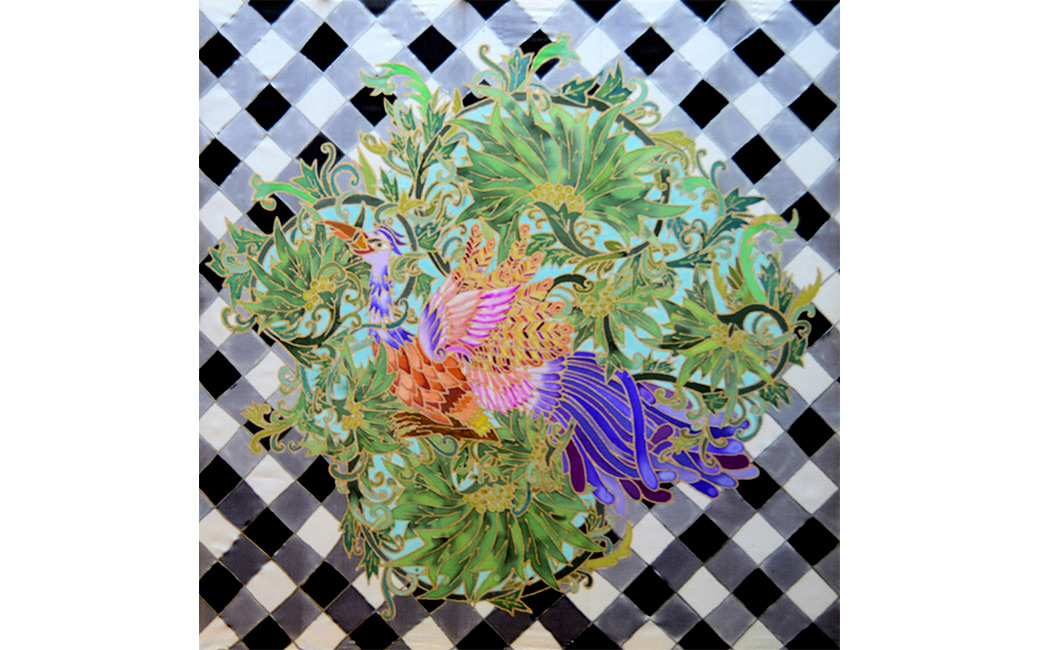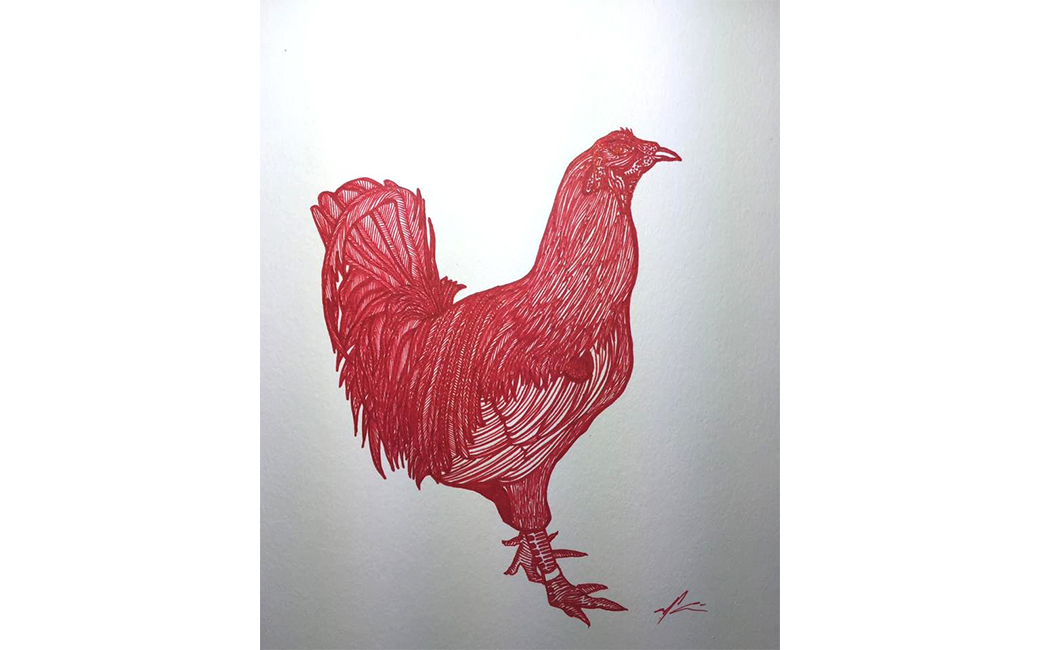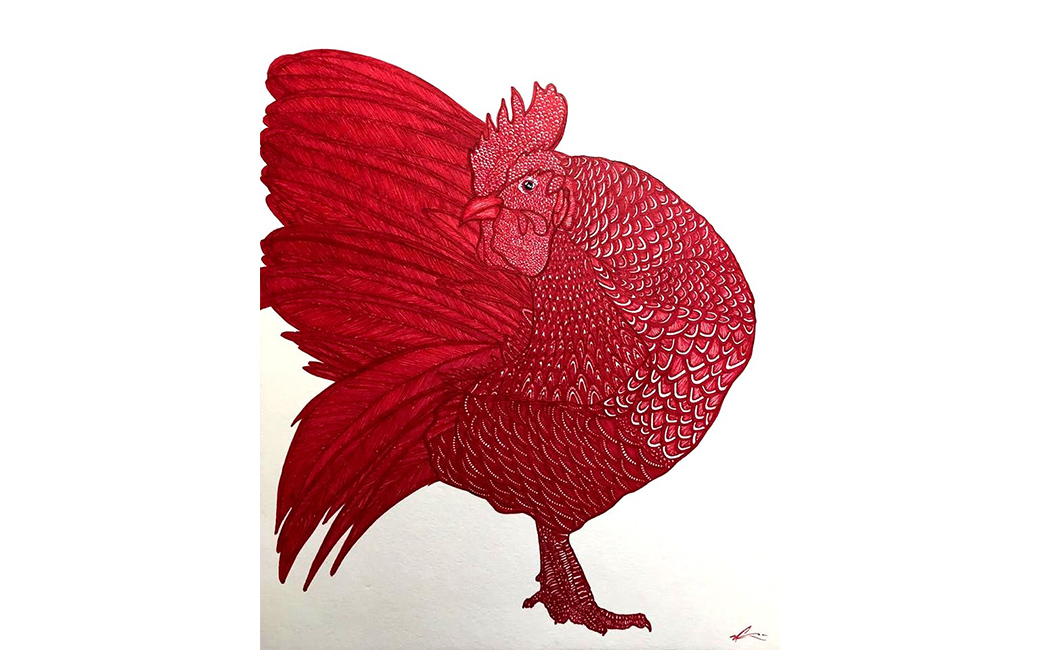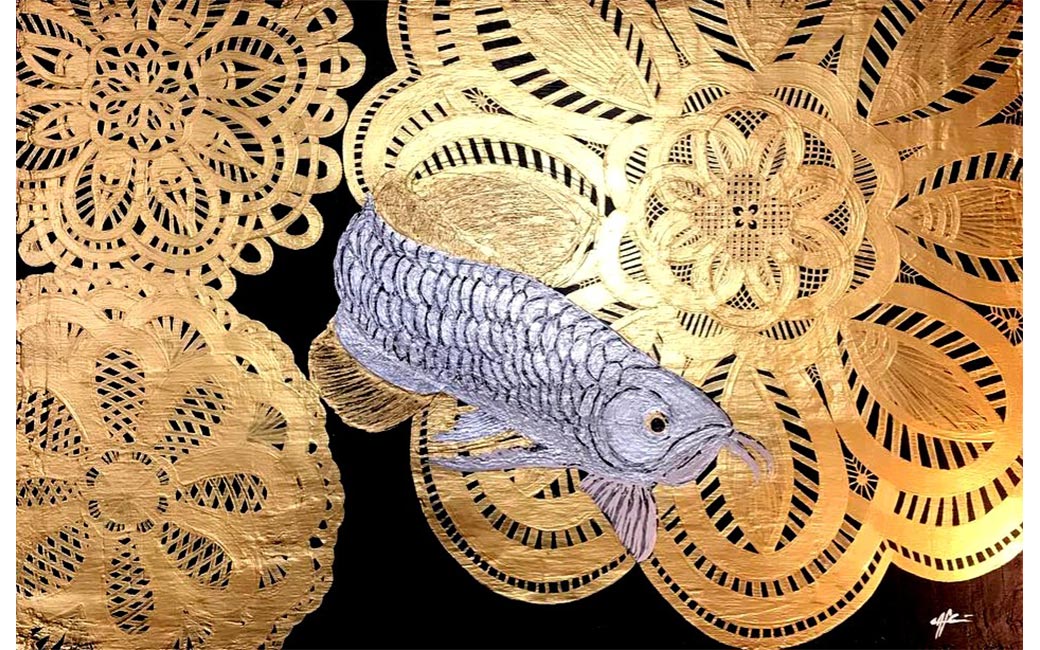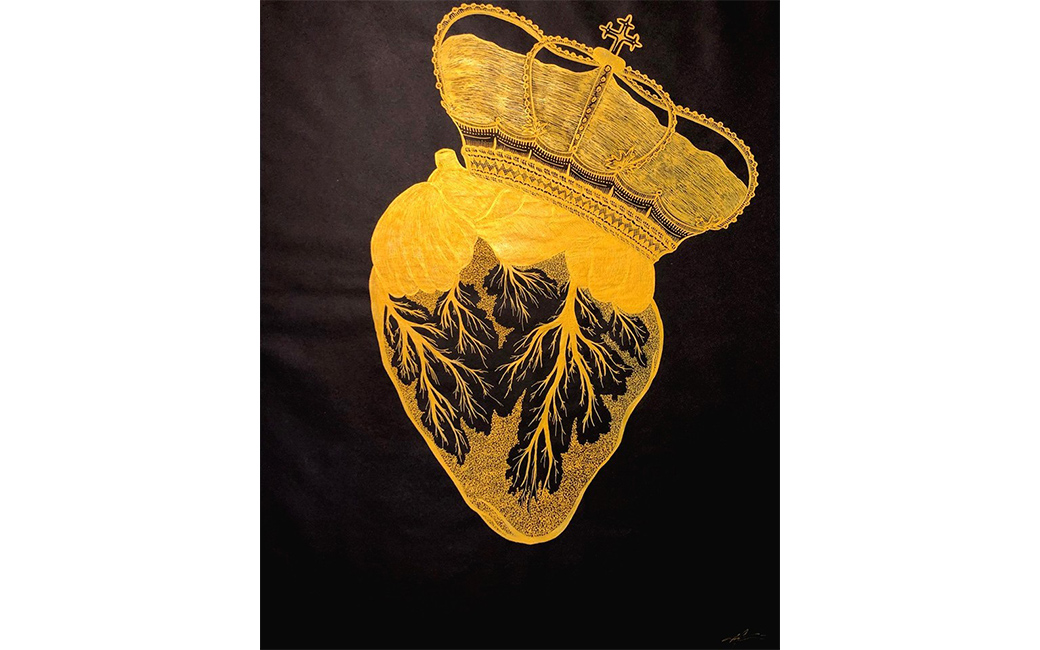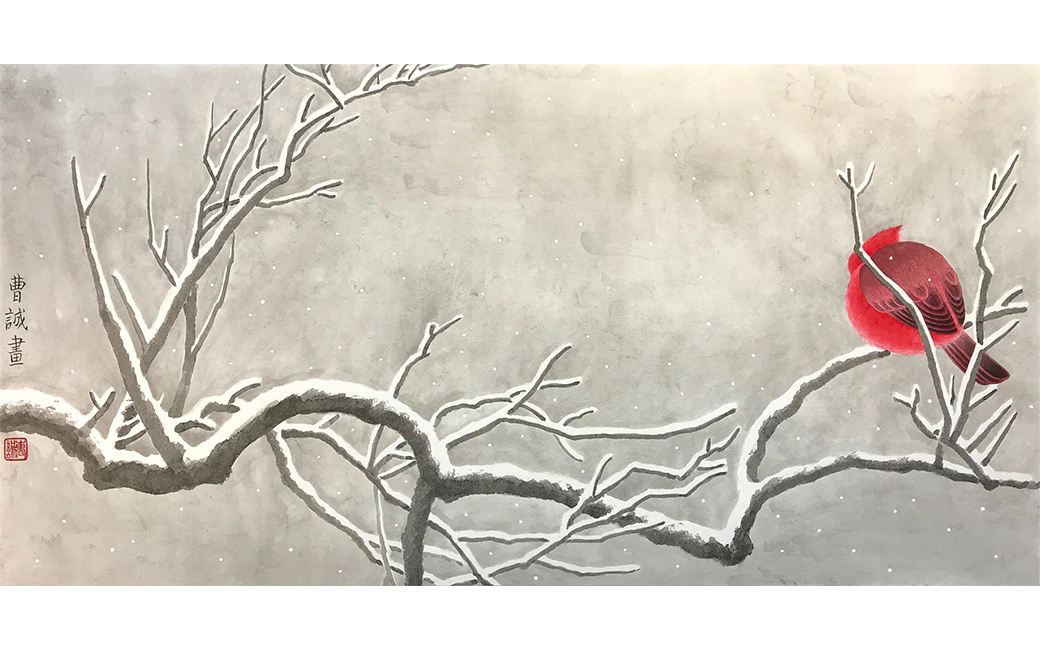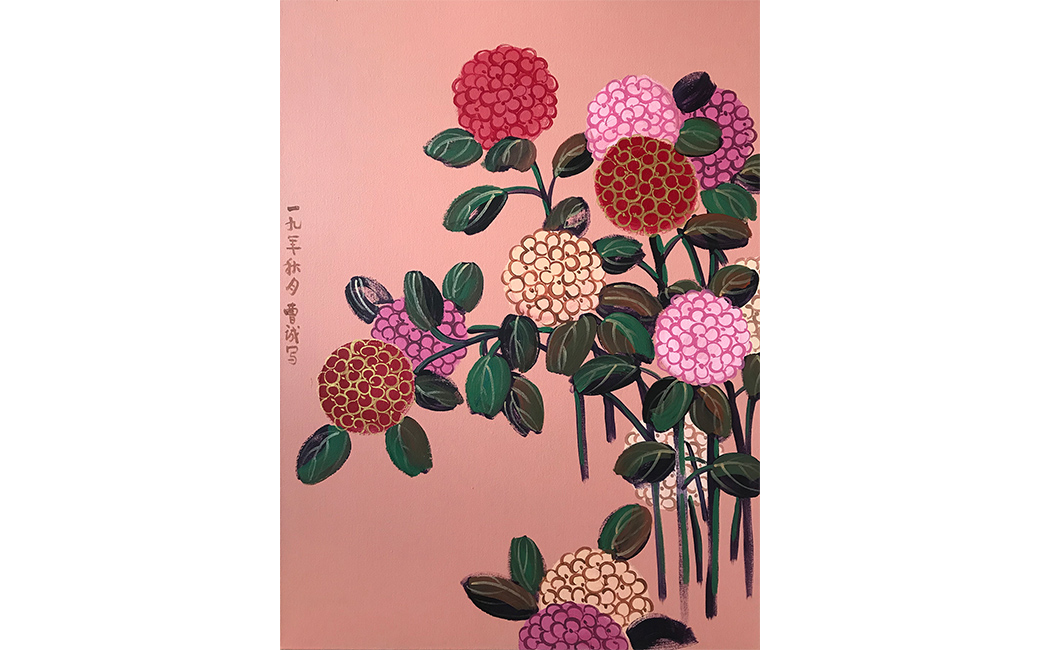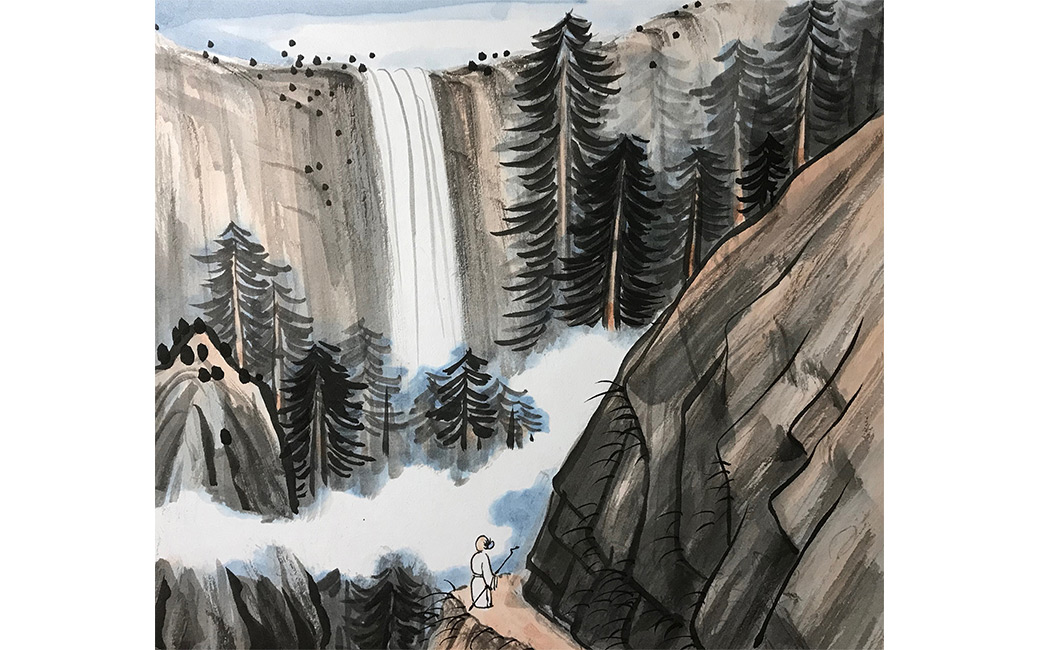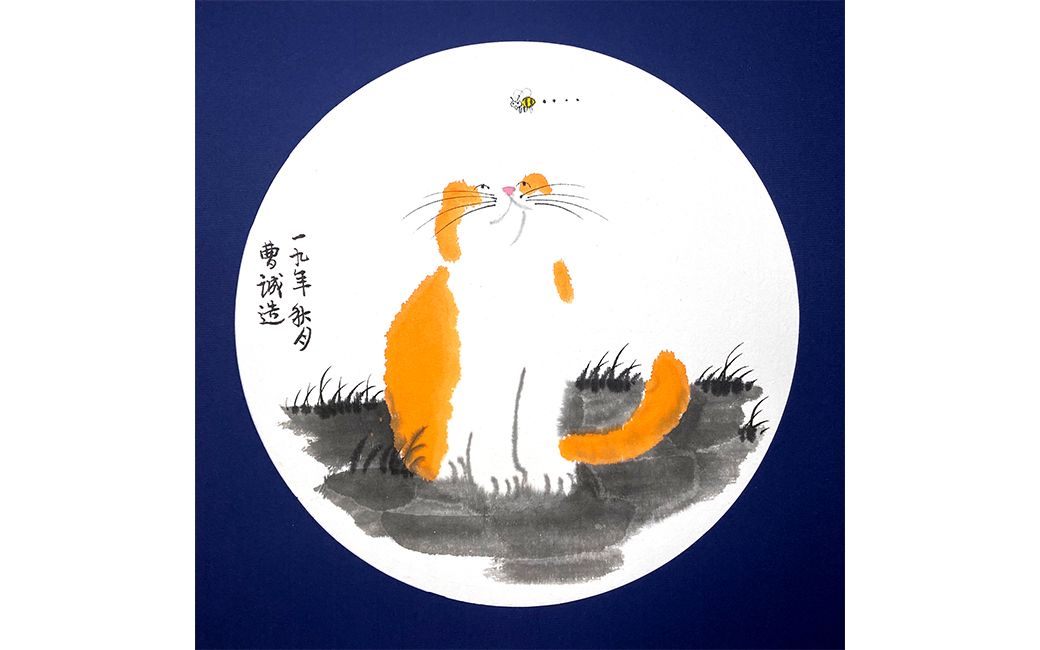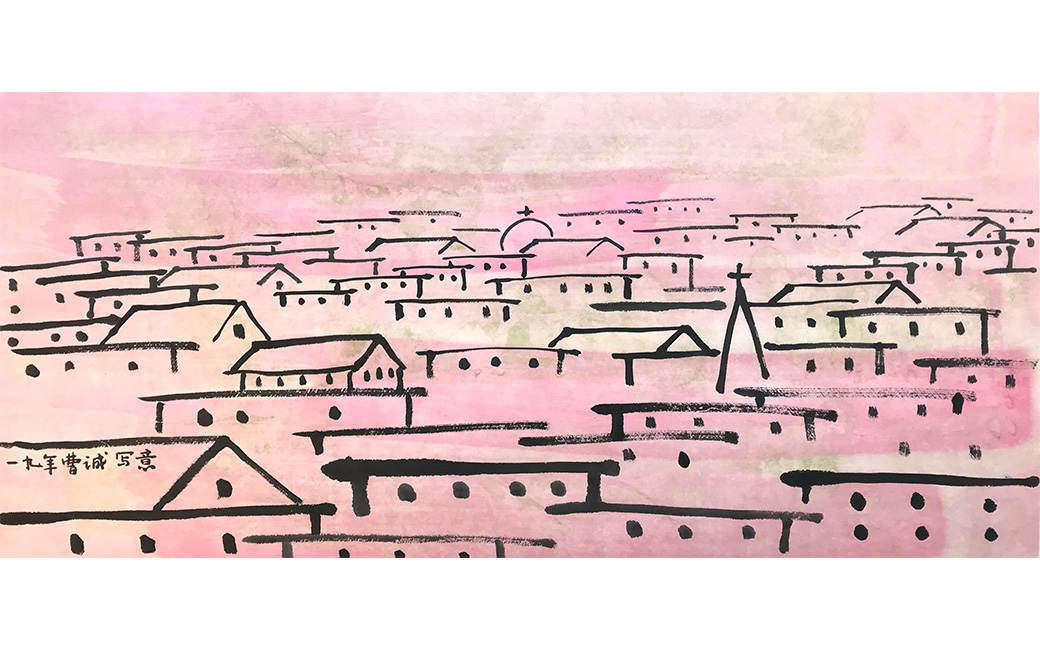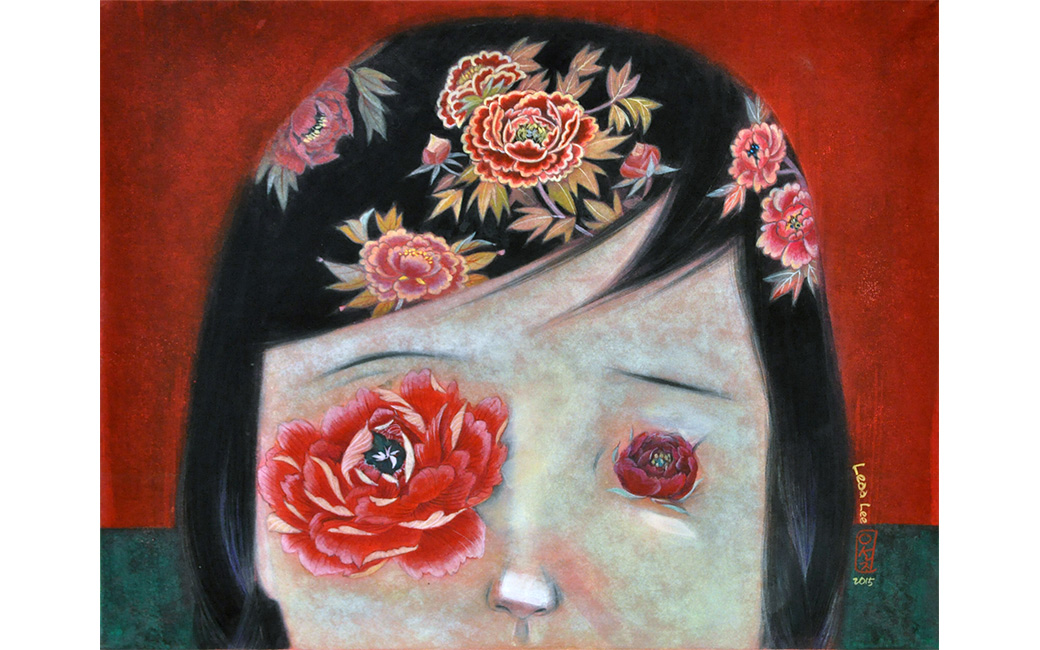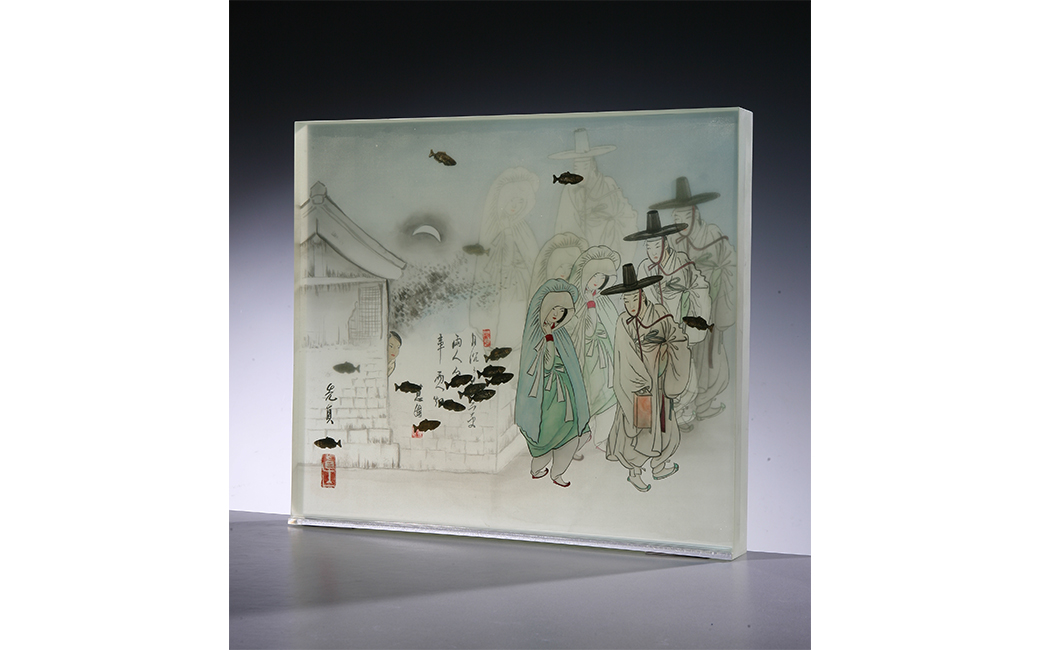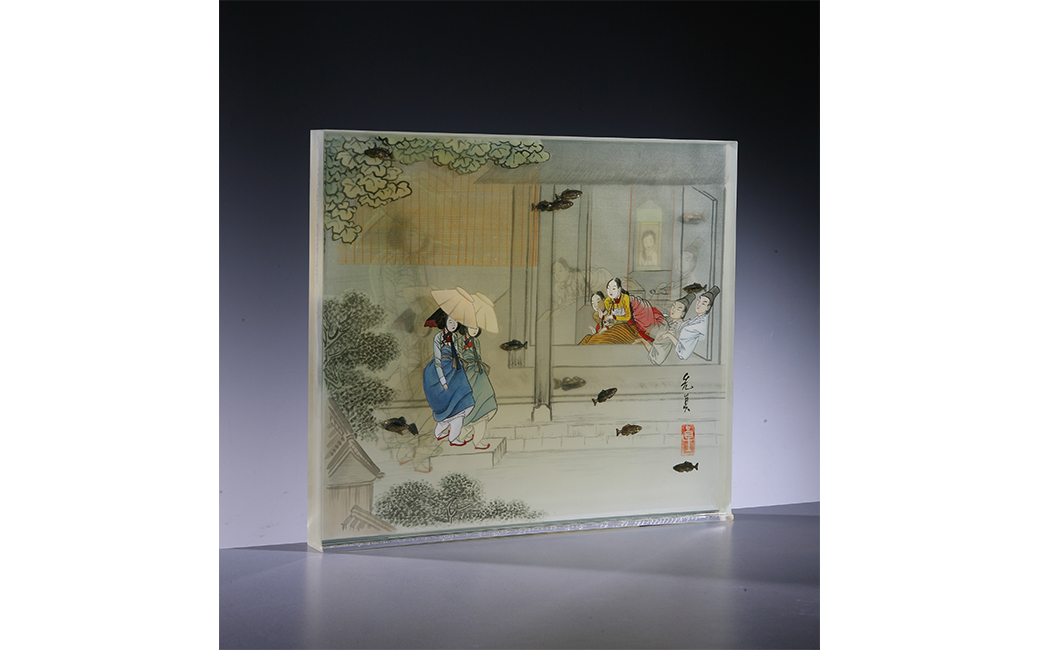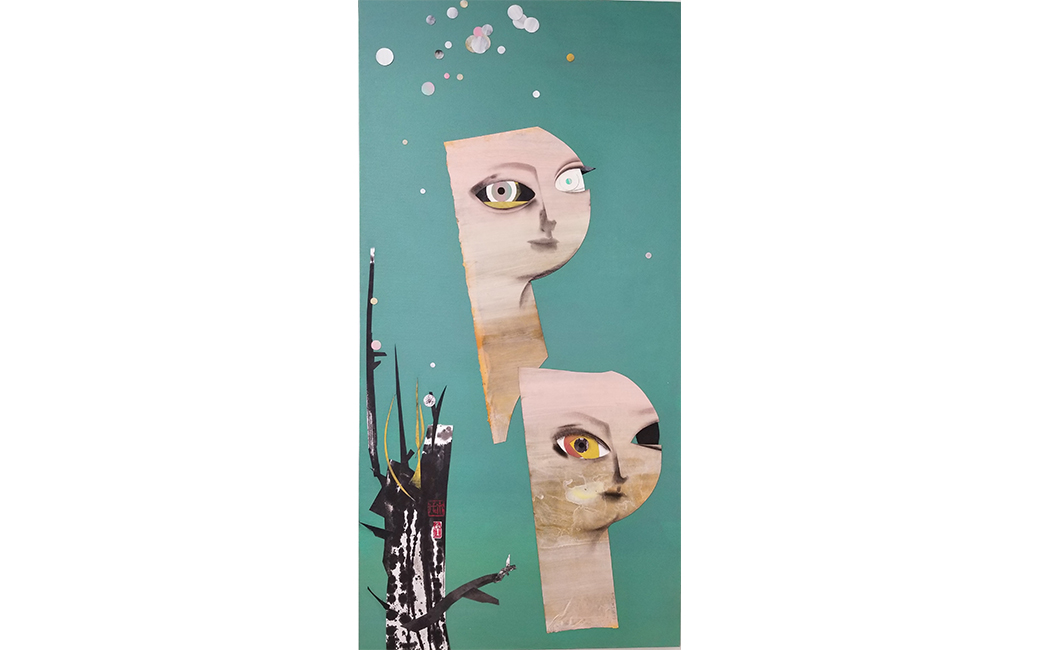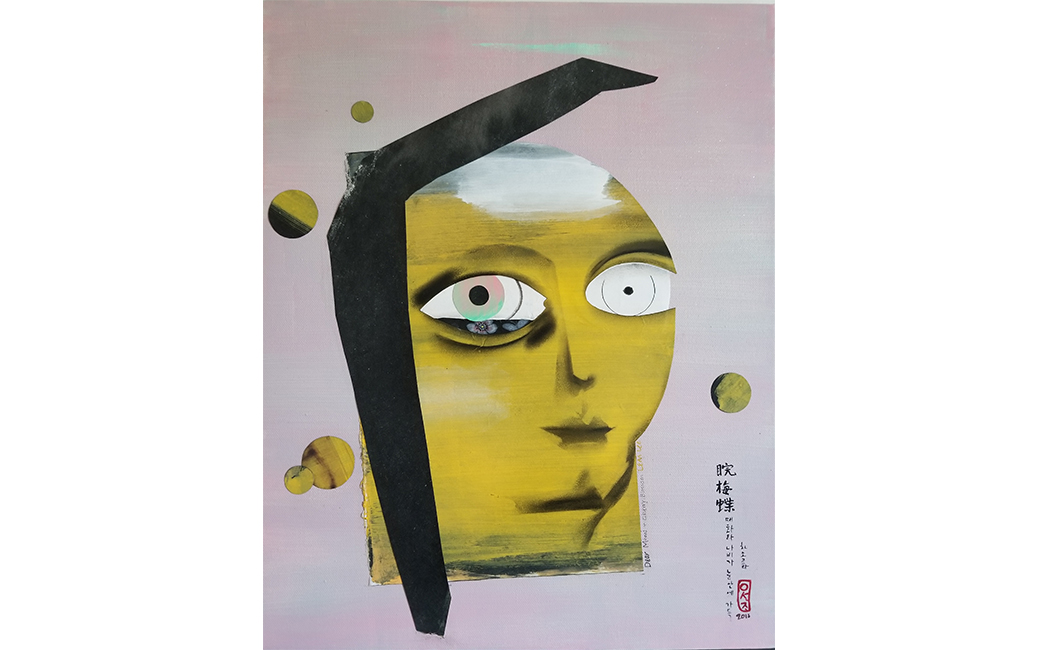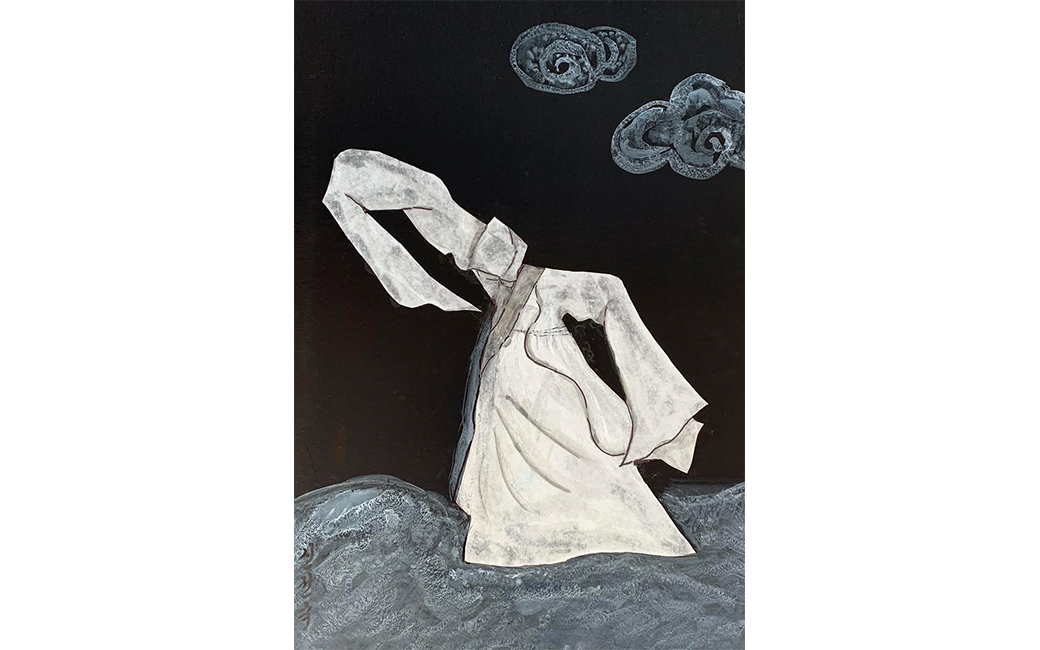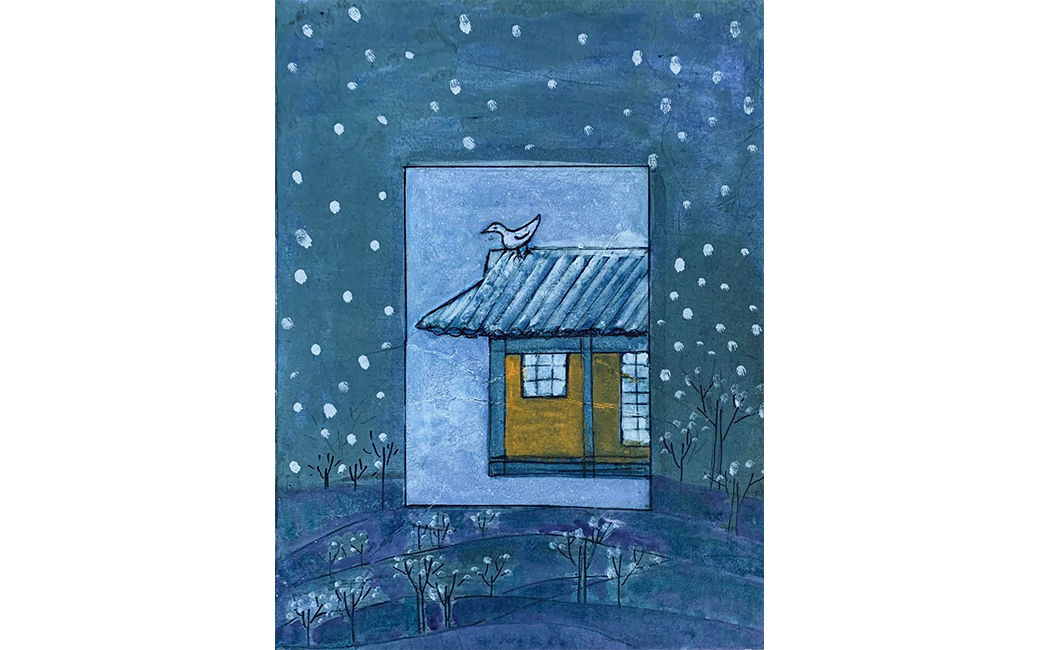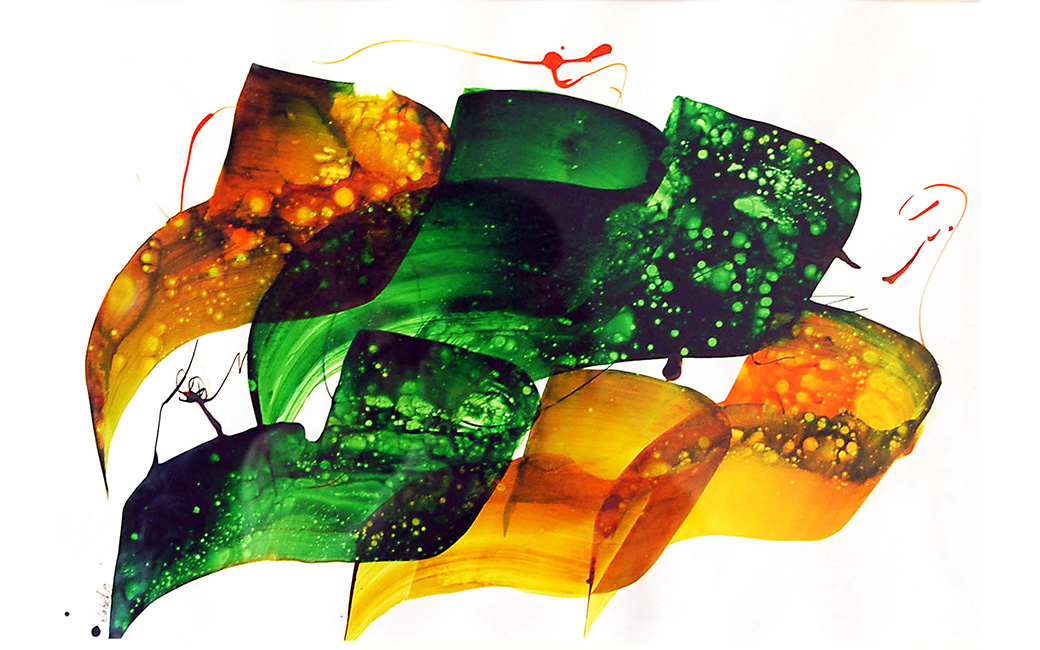
Honoring & Interpreting Tradition
These artists draw inspiration from traditional art practices, celebrating their cultures and adding their own modern sensibilities.
Nahid Tootoonchi
Nahid Tootoonchi is an Iranian American graphic designer, artist and educator. Tootoonchi’s recent artwork and research focuses on Persian calligraphy. Using Persian letterform (Farsi) calligraphy with bamboo pen, wooden pallet, and organic inks, she creates composition from layering letterforms based on poems of Persian ancient poets such as Rumi, Hafez and Saadi. The resulting artworks express the content of the poem, rather than reproduce the text legibly. Tootoonchi aims to use simple elements to create harmonic works, celebrating life and the beauty of Farsi letterform in abstraction. In its natural form and elementary quality, she finds an infinite wisdom gravitating towards a basic way of living. The vibrancy and energy of colors speaks togetherness with harmony.
Nico Gozal
Nico Gozal’s cross-cultural art training includes the Budihardjo School of Fashion in Jakarta, Indonesia as well as the International Academy of Merchandising and Design in Tampa, Florida. Gozal draws his inspiration from elements of Central Java and Balinese traditional art and culture, including Javanese Wayang/shadow puppets, Javanese Batik motifs, and Balinese wood carving design. He hopes to bring a modern twist to Javanese and Balinese culture and introduce them to the rest of the world. Four of Gozal’s works are on view here. The Rooster Dance (2018) is inspired by Tajen, an old cock fighting culture in Bali which has been banned for its cruel practice. Batik Parang Rama & Sinta (2017) features the two main characters from the Wayang/shadow puppet tale of Ramayana. Batik Rumpi Sari (2017) depicts various elements of Javanese batik motifs, including the famous “Mega Mendung” design from the Cirebon region. The black and white checkered cloth (Saput Poleng) featured in Zambrud Khatulistiwa (2019), is commonly found wrapped around trees, statues and other elements of worship in Bali. It represents the presence of good and evil and everything in between (Rwa Bhineda).
Elmer Calata
Elmer Calata was born and raised in both urban and rural Philippines. His influence has come from the loud vibration of the city as well as the mute stillness of the provinces. Elmer’s work expresses his experiences drawn from his native land, the “campo” lifestyle of South America, his extensive world travels, and his adaptation to the Western world. Elmer’s inspiration is often rooted in human nature, the environment, as well as the cultures to which he has been exposed. The intricate, clean, and layered proportions of Elmer’s work are coupled with strong, solid colors reflecting his vision to create something simple, crisp and organically pleasing.
Cheng Cao
Cheng Cao is a Chinese artist working and living in Baltimore. Cao devotes himself to as many aspects of Chinese art as possible. While concentrating on Chinese tradition, Cao includes modern elements in his art. Cao believes that the dialogs between Chinese and Americans (or any other cultures) can provide interesting inspiration for his students in their own art creation.
Sunjin Lee
As an artist, my life closely resembles the theme of “journey” featured in my works. Traveling not only introduces one to a new, foreign environment, but also to people’s inner landscape. The vast variety of people coexisting in this world essentially indicates the inevitable presence of profoundly different beliefs and values. I usually draw and paint portraits because I always have an interest in humans, and the dualism that extends into people’s social research.
Five of Sunjin Lee’s works are on view here. Her Dear Moon pieces represent the Moon's new resilience and positive change for us. In Korea’s traditional heritage, if people have any wishes, they wish to the moon under the moonlight with the moon reflecting on the surface of their eyes.
Grace Sunsook Park
My passion for Asian brush painting started in adolescence and continues to grow stronger 50 years later. My paintings as a young artist reflect my formal training in traditional brush painting techniques and philosophy. Over the years, my style has evolved into a more contemporary style. As a first-generation Korean-American, I have lived the majority of my adult life in America. My immigrant experience has taken my life in unexpected directions and influenced my art into a style that is uniquely my own. I am deeply committed to sharing the beauty and history of Korean art with second-generation Korean-Americans and the greater community.
Two of Grace Sunsook Park’s works are on view here. “Sungmu” or monk’s dance is a unique Korean cultural treasure and inspired her art. Gracefully flowing movements and meditative stillness define the aesthetic of a typical performance. The origins of this beautiful dance can be traced back 500 years to Buddhist ceremonies as an offering to Buddha. While the dance began as a Buddhist offering, it has evolved beyond religious ideals to a deeply artistic expression of the universal emotions of suffering, hardship, resilience, nirvana, and joy. In Harmony (2020), Park strives to capture the stark simplicity of the solo dancer’s flowing white robe, long sleeves and white hood. The simplified landscape in Peace (2018) is a metaphor for Park's journey. It reflects the journey into a fantasy world filled with imagination and wonder.
